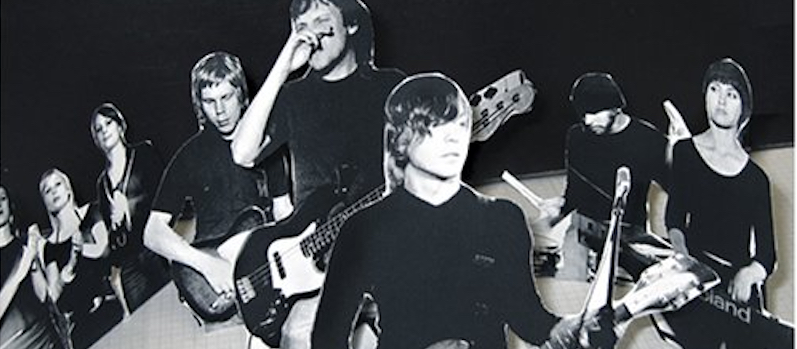There’s not a single note out of place on Pan•American’s Quiet City, Mark Nelson’s fourth record under said moniker.
The most faint murmur of guitar or piano is pristine and plotted and precise, falling into the listener’s ear at just the right moment with just the right intention.
Even the phonograph-needle static on “Smallholding,” an early track, is crafted with invigorating and intense awareness of its musicality.
The way it carefully shifts and shuffles between distant plucks of an upright bass or a bending, high-pitched drone feels like no mistake or coincidence.
Nelson’s craft and delivery is, simply put, incredible, so much so that it feels like its borders on the obsessive. That may be part of the record’s weakness. Everything is so carefully and painstakingly defined that the listener can find few cracks in the wall in which to enter the record’s sentiments or statements.
Nelson’s quiet city, it seems, is heavily fortified.
That being said, the city is also a sight to be seen, as the expression goes. Essentially, it’s split into two interwoven segments, one that is based in subtle electronics and exquisitely mapped soundscapes and another that is more organic, more humane and more readily accessible.
Both seem to toy with notions of certain musical themes, whether it’s the recurrence of drones or the interjection of like-minded bass scales, but the links between tracks is as phantasmic as the ghosts the music seems to summon.
It’s tough to explain just how the occasional compressed air static blasts in “Smallholding” feed into the same static (though cut much lower in the mix) in “Wing,” but there it is and Nelson doesn’t seem to be stringing things together by accident. (Same goes for the drones scattered throughout.)
Quiet City makes more than passing allusions to works by composers like Arvo Part — are we meant to listen to this record’s eight tracks as a sequence of variations drafted in a similar vein?
Are the record’s largely instrumental tracks — which bear titles that could be linked to urban observations, like “Inside Elevation,” “Hall and Skylight,” and “Lights on Water” — more thematically linked than we might initially suspect? Nelson seems to leave the listener wondering.
For all the academic curiosities Quiet City suggests, there are moments that work more on gut levels and it’s here that the latest Pan•American outing, in my opinion, hits its stride.
We can debate about the weighty implications of crafting subtle variations on musical themes, but the bass swells, hidden rivers of feedback and drones, and spare guitars of “Inside Elevation” or “Christo en Pilsen” work on all sorts of levels.
Likewise the tender acoustic introduction to the heart-breaking “Hall and Skylight” or the pre-dawn jazz ruminations of “Retouch” or the buried whispers of “Before,” a spine-chilling album-opener that really sets the tone of the record.
With tracks like this, Nelson is no doubt in the running for “Best Dream/Nightmare Soundtrack of 2004.”
On three of the record’s eight tracks, Nelson is assisted by Charles Kim, of Sinister Luck Ensemble but — more of note — formerly of the amazingly underrated Pinetop Seven. Kim lends a tender humanity and sense of reflection to the record, something that can be lost on more pristine and carefully recorded tracks like “Lights on Water.”
It’s on the Kim/Nelson tracks — if I’m guessing them correctly — that we get the full-band arrangements: soft hums of guitar, upright bass, the jazzy pitter-patter of percussion, even vocal arrangements that adhere, if only somewhat, to conventional verses and choruses. “Hall and Skylight” and the closing “Christo en Pilsen” are at once bittersweet and devastating, all the more elegiac and substantive for the subtle compositions that surround and nearly engulf them.
Nelson could gain greatly from even further collaboration with Kim. The former’s handle on composition and tone can be frightening in its pursuit of perfection but the latter seems to know that the best way for a record to sink into your bloodstream and really make a dent in you is by revealing some of the rusty workings of those behind the sheet music. – Delusions of Adequacy, Aug. 25, 2004
-30-




